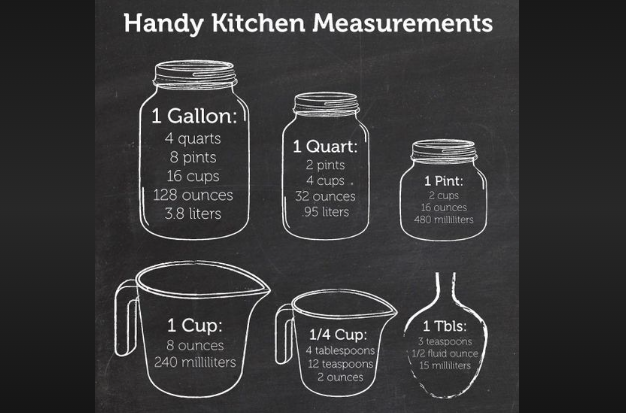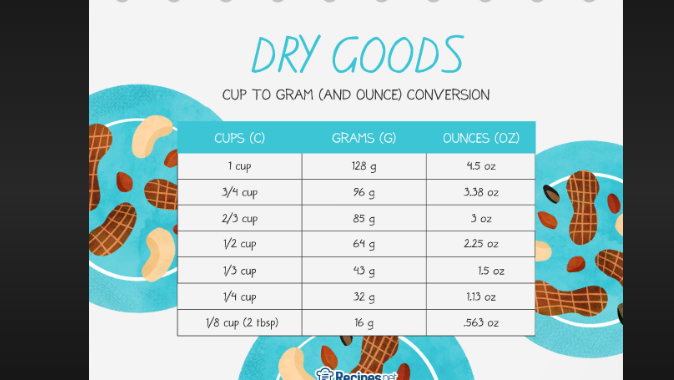How Many Cups is 15 Grams: A Simple Conversion Guide
Converting measurements can be a common challenge, especially when it comes to cooking and baking. If you're wondering how many cups are equivalent to 15 grams of a specific ingredient, this guide will provide you with a clear understanding to help you in your culinary endeavors.

Handy kitchen Measurements
1. Understanding Grams and Cups:
Grams and cups are both units of measurement, but they measure different things.
Grams are a unit of weight or mass, while cups measure volume.
When converting between the two, it's important to consider the density of the ingredient being measured.
2. Common Kitchen Ingredients:
Different ingredients have varying densities, which means that the same weight in grams can take up different volumes in cups. Here are a few common kitchen ingredients and their approximate conversion from grams to cups:
- Flour: 1 cup of all-purpose flour is approximately 125 grams.
- Sugar: 1 cup of granulated sugar is about 200 grams.
- Butter: 1 cup of butter is roughly 227 grams.
- Water: 1 cup of water weighs approximately 240 grams.
3. 15 Grams in Cups:
To convert 15 grams to cups, you'll need to know the density of the ingredient you're working with.
For example, if you're converting flour, which is about 125 grams per cup, then 15 grams would be roughly 0.12 cups.
However, if you're converting sugar, which is about 200 grams per cup, then 15 grams would be approximately 0.075 cups.
4. Using a Kitchen Scale:
The most accurate way to measure ingredients is by using a kitchen scale.
This eliminates the need for conversions and ensures that your recipes are consistent.
Many professional chefs and bakers prefer using a kitchen scale for precise measurements.
5. Adjusting Recipes:
When converting between grams and cups, it's important to adjust your recipes accordingly. If a recipe calls for a specific weight in grams, it's best to use a kitchen scale.
If you're using cups, be aware of the ingredient's density and how it might affect the final result.
6. Precision in Baking:
Baking is a science, and slight variations in measurements can impact the outcome of your baked goods.
If a recipe specifies grams, it's recommended to follow that measurement for the best results.
7. Online Conversion Tools:
If you're in a pinch and need a quick conversion, there are numerous online conversion tools available.
These tools allow you to input the ingredient and the quantity in grams, and they provide an approximate conversion in cups.
8. Variability in Measurements:
Keep in mind that even with conversions, there can be some variability due to factors such as how ingredients are packed into cups.
Using a consistent method of measurement will yield more consistent results in your cooking and baking.
9. Learning by Experience:
Over time, you'll become more familiar with the conversions between grams and cups for the ingredients you use most often.
Experience in the kitchen will help you gauge the right amount of each ingredient for your recipes.

Dry goods
Converting grams to cups is a common challenge in the kitchen, but with a clear understanding of the ingredient's density, you can achieve accurate conversions. Whether you're using a kitchen scale or online conversion tools, the goal is to ensure that your culinary creations turn out as intended. Remember that precision matters, especially in baking, where even small variations can affect the final outcome. As you gain experience, you'll develop a better sense of how different ingredients translate from grams to cups, making your cooking and baking adventures even more enjoyable and successful.